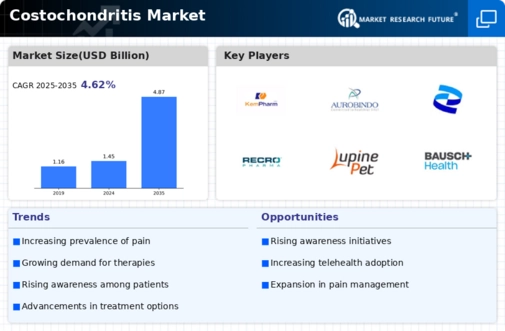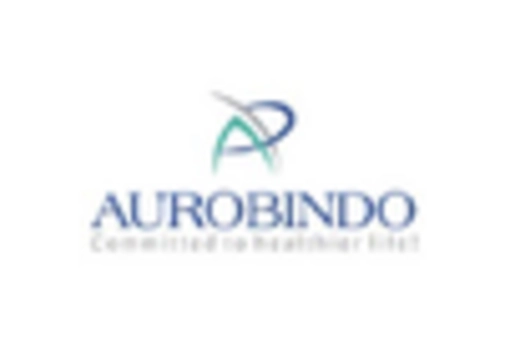Market Share
Costochondritis Market Share Analysis
The Costochondritis market is nestled within the larger part of the musculoskeletal and rheumatic disorder industry, with some strategic initiatives that help to build a competitive position and address the unique challenges associated with this inflammatory disorder featuring costosternal and costovertebral joints. The basic strategy is in therapeutic innovation, where companies spend heavily on research and development (R&D) to create advanced therapies for Costochondritis. These inventive treatments hope to provide effective pain relief, decrease swelling and enhance lives of patients burdened by this often-incapacitating condition. Novel solutions are introduced for separation as well as capturing big share of costochondritis treatment landscape.
Pricing strategies play a crucial role in determining how much market space would be taken up by different firms operating in the sector who deal with Costochondritis. This is because musculoskeletal disorders are chronic; hence require continuous care. Some will use competitive pricing which ensures that more patients can afford their therapies while others will employ value-based pricing showing unique advantages and therapeutic advancements made possible by their Costochondritis therapy to justify higher costs. Striking a balance between affordability and expected value being critical, it ensures that R & D activities remain ongoing while at the same time allowing patients’ access to effective interventions.
Collaborations as well as partnerships are vital towards succeeding in Costochondritis business. To tap into expertise, pool resources and navigate through various complexities of developing treatment for Costocondritis among other things companies constantly create strategic alliances with rheumatologists, pain management specialists as well as research institutions. The result of collaboration is speedy trials, improved treatment protocols as well as strong distribution networks from which these firms have emerged key players for Costocondritis treatment market.
Marketing plus branding strategies is fundamental when it comes to influencing market shares within this segment8.Campaigns focused on comprehensive marketing could be used by such companies to explain how good their products for treating costocondrits are, make doctors aware of it and what effect it has on patients. This is seen through education programs, online platforms as well as presence in rheumatology conferences that all contribute to a strong brand identity hence affecting market shares at the end.
When wanting to consolidate their market share in the Costochondritis treatment segment, companies must consider geographical expansion as a strategic move. It is also important for them to identify high prevalence areas for musculoskeletal disorders and design strategies that meet specific health requirements within these regions. More comprehensive global presences can therefore be achieved by customizing products, distribution channels and marketing approaches which may fit into different cultural or regulatory contexts found across different parts of the world.
To maintain or grow itself in the same market, a company’s investment in post-market surveillance, pharmacovigilance and patient support programs must continue being enhanced for costochondritis treatment. Consistent monitoring of safety and effectiveness of therapy with targeted patient education initiatives enhances confidence among clinicians involved in these activities and patients themselves. This commitment to ongoing healthcare professionals’ trust building on product safety as well as efficacy will ensure long term success among companies as ethical stakeholders in field of costochondritis treatment.










Leave a Comment